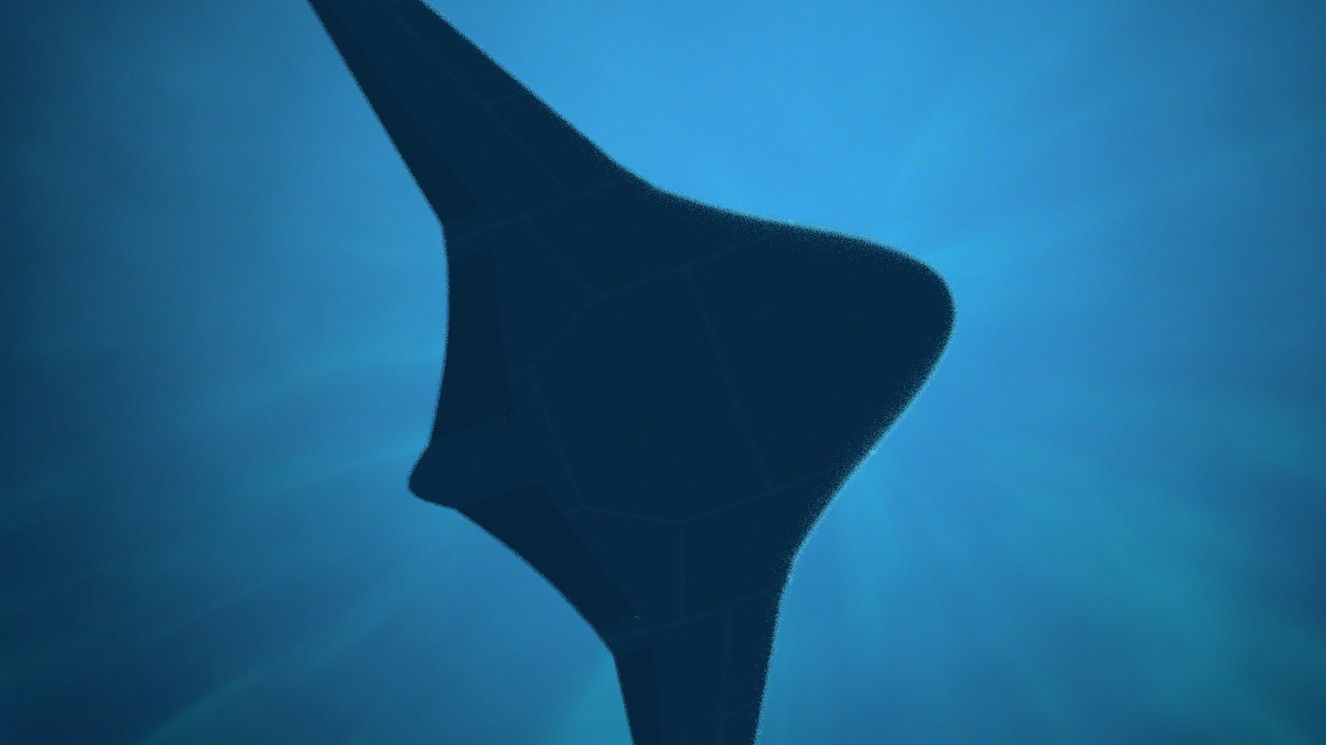Northrop Grumman and Martin Defense Group have been chosen by the Defense Advanced Research Projects Agency (DARPA) to proceed to the second phase of the Manta Ray undersea drone project.
While air-borne drones have been widely used by militaries across the world, unmanned underwater vehicles (UUV) are a relatively newer concept. The goal of the initiative, according to DARPA’s press release, is to build underwater vehicles that can function without human assistance, even for logistical support or maintenance.
Since UUVs are designed to stay underwater for extended periods of time, they must have exceptional endurance.
The UUV, as shown in a concept video, is planned to function at extreme depths in the oceans and may be configured to carry extra payloads that could perform specialized tasks.
On 20 December, the Pentagon research agency announced that the two companies will develop full-scale demonstration versions of the vehicle that would be “able to operate on long-duration, long-range missions in ocean environments.
“The Manta Ray program has made substantial progress in enabling payload-capable autonomous underwater vehicles to function without the need for crewed vessels or support infrastructure,” stated Kyle Woerner, Manta Ray’s program manager.
“Manta Ray is in a unique position to introduce a new kind of underwater vehicle while also contributing important component technologies to other critical undersea programs.”

The video shows the vehicle releasing a smaller sensor-like payload, which emits a signal, and then returns to the Manta Ray. According to DARPA, “the Manta Ray program completed Phase 1 with Critical Design Reviews that confirmed design maturity and readiness for proceeding to Phase 2.”
Now the focus will be “on subsystem testing, fabrication, and full-scale integrated vehicle in-water demonstrations,” the agency said.
The US Navy recently stated that it has begun building a facility in California that will house many of these autonomous vehicle technologies as well as the testing activities that go along with them.
Creating A Hub For Surface, Subsurface Drones
The Navy recently revealed new plans for a “purpose-built” facility specialized for testing its latest unmanned surface and subsurface vehicles at its warfare center in Port Hueneme.
This facility will serve as a gateway for Navy learning and experimentation on unmanned maritime vehicle prototype capabilities, operations, and maintenance in order to guide future programs.
The new facility will also serve as a staging area for the service’s many prototypes and experimental vessels. Several unique unmanned vehicles such as ‘Sea Hunter’ and ‘Overlord’ have been developed by the Navy in collaboration with Pentagon research and development agencies over the past several years, but many of them are still technically housed by those same research agencies.
On December 8, the service announced the completion of modifications to an existing building that would now house XLUUV prototypes as well as the personnel who will test them after fabrication by prime contractor Boeing is concluded.
The Extra Large Unmanned Undersea Vehicle (XLUUV) and prototypes for the Medium and Large Unmanned Surface Vehicles are among the systems that will be deployed at Port Hueneme.
The new facility in California will serve as a single hub for all of these vehicles. It also puts them near squadrons dedicated to testing with unmanned technologies, such as the Surface Development Squadron in San Diego.
Does China Have Manta Ray-Type Drone?
Early in September 2021, Chinese media reported that the Chinese researchers from a military-linked university have conducted the first open sea test of a bionic robot that resembles and glides like the American Manta Ray drone, in South China Sea.
Spy fish? China tests manta ray submersible drone in South China sea. Emeritus Professor @NoelSharkey from @shefcompsci comments on China's first open sea test of a bionic robot that looks and swims like a manta ray. https://t.co/VjKW43110E
— EngineeringSheffield (@SheffUniEng) September 28, 2021
The drone test was initially announced on September 6 by Xinhua, a Chinese state-run news agency. In a video, the bright yellow unmanned undersea vehicle (UUV) is seen releasing into the water near the disputed Xisha Islands, also known as the Paracel Islands. China, Taiwan, and Vietnam all stake claim to these islands.
The design of the Chinese UUV is similar to Manta Ray’s and can “flap its wings and slide underwater”. The drone is a fine example of biomimetics, a design technology that incorporates physical attributes of biological species. The new 470-kilogram (1,036-pound) bionic soft robot prototype with a three-meter wingspan can dive to a depth of up to 1,025 meters, according to Xinhua.
The drone has “high propulsion efficiency, great maneuverability, high stability, low environmental disturbance, low noise, large load capacity, and smooth seafloor landing,” according to the developers. The cost of the Chinese UUV is unknown, although the project appears to be further along than its competitors.
Biomimetics is becoming increasingly popular around the world. The manta ray has been imitated in a variety of projects, including the US’ Manta Ray project, the British Royal Marines’ Raydrive, and Singaporean MantaDroid.
Chinese state media reported that the “manta ray” had already been employed to evaluate the ocean environment on a significant coral reef in the Paracels. Vietnam has regularly criticized China’s activity in the area, so an underwater reconnaissance capability would be a major concern for the country.
- Contact the author at ashishmichel@gmail.com
- Follow EurAsian Times on Google News




